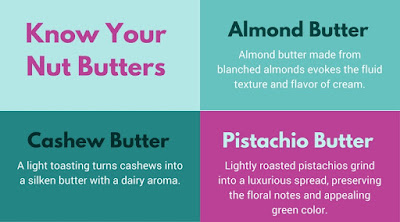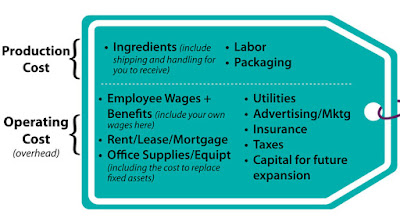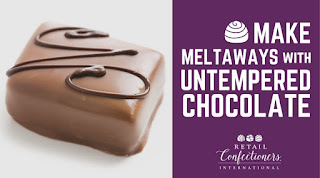|
|
Posted By RCI,
Tuesday, February 6, 2018
Updated: Monday, April 27, 2020
|
When it comes to getting media coverage, candy shops have a major advantage. Candy! And who wouldn’t want to see more candy and chocolate on the news?!
If you aren’t getting any bites from your local media, chances are you haven’t submitted a press release lately. If you have taken the time to carefully craft a press release and send it to your local media, with little or no avail, you are not alone. Keep reading for five common mistakes businesses make when writing press releases, plus tips on how to get the media knocking on your door hungry for more!
1.) You didn’t proofread!
Nothing loses credibility faster than spelling errors and poor grammar. Make sure to read and re-read your press release carefully and, then, ask a friend or two to proofread it for spelling and grammatical errors. Invite them to share constructive feedback on how to make your press release more newsworthy.
2.) Too much hype!
If your press release sounds too much like an infomercial, there’s a good chance it will get rejected. The intent of a press release is to help the media deliver news. If you want to pay for advertising, however, the sales department will gladly accept your money and your hype.
A press release should deliver the facts and explain why your news is relevant in an objective manner. As an overall rule, avoid subjective claims, like “the best,” and other cringe-worthy marketing jargon.
3.) Me, myself and I included
A press release written in first or second person (e.g., I, we, you) is a big no-no! Not only does this make the content seem subjective, it creates a lot more work for journalists to make corrections, making it less likely to get published. Always write press releases in third person (e.g., he, she, it, they). Within a quote is the only place it is acceptable to use first or second person.
4.) What now?
If it is unclear what the reader should do after reading your press release, your press release has unfortunately missed the mark. A successful press release will have one clear call to action. When writing your next press release, be mindful of what you want to accomplish and make that objective clear.
5.) Not too long, not too short.
If your press release is too long, chances are you’ve lost your focus and you’ll lose your reader too. However, if your press release is too short, you could be cutting out vital details.
As a good rule of thumb, try to limit press releases to one page. But before going overboard with the backspace, make sure you’ve addressed the 5 Ws and 1 H (who, what, when, where, why and how).
A well-written press release can offer more return than any paid advertisement. Avoiding these common mistakes will help you write a press release your local media won’t want to pass up.
Tags:
Media
Press Release
Permalink
| Comments (0)
|
|
|
Posted By RCI,
Tuesday, January 30, 2018
Updated: Monday, April 27, 2020
|
In honor of RCI’s upcoming Chocolate Boot Camp® course, taking place February 19-22 in Waterbury, Connecticut. We’re unveiling two simple, yet highly effective tools and techniques that are sure to improve your enrobed centers.
Stringing
It may surprise you to learn that stringing or marking a coated center offers more benefit than simply identifying the center. Whether you string by hand, a fork or an automatic decorating machine, those stringing marks can hide small imperfections on the surface (such as air bubbles) and give the product a more glossy appearance. The three dimensional quality of the markings create more angles for light to reflect, much like the facets of a diamond.
TRY IT: Next time you are coating centers, mark one piece and leave the next piece smooth. The chocolate temper will be the same on both, but the strung piece will have a better shine once cooled.
Detailer Rods
 |
Even a small adjustment to the detailer rod can make a big
difference to your finished product. |
Detailer rods, located after each wire belt, affect the bottom and bottom edges of the centers. When used properly, the rod is close to the wire belt and slightly below the level between the wire and cooling belts. If adjusted too low, this will result in tails (pictured on the far left) or bases (center photo). When set too high, it will remove too much chocolate, leaving thin bottoms (as seen in the photo on far right. Should the detailer be set too far away from the wire belt it can also scrape bottoms and deposit lines of chocolate onto the cooling belt. Even a small adjustment to the detailer will make a big difference in your finished chocolates.
Tags:
Chocolate Boot Camp
Chocolate Production
Enrobing
Permalink
| Comments (0)
|
|
|
Posted By RCI,
Tuesday, January 23, 2018
Updated: Monday, April 27, 2020
|
Nestled snuggly between New Year’s Day and Valentine’s Day is Groundhog Day on February 2. Although it may be a mystery to many of us as to why we give these furry little critters any merit when it comes to predicting the weather, there’s no question many consumers will be excited to participate in this American holiday. Here’s some ideas of how your candy business can take advantage of all the groundhog hype next month!
Make Groundhog Day Sweet
Just when you thought those cuddly groundhogs couldn’t get any cuter, they took on a chocolate form! Baking blogger, Bakerella, created adorable little groundhog cupcakes using peanut butter cups and other candies (click here for ingredient list), but you could really do without the cupcake—unless you happen to make cupcakes or could partner with a local bakery.
Of course, there are lots of options for substituting similar ingredients if you don’t have these items on hand—and bonus, if you make your own peanut butter cups! Another option would be to try chocolate-covered sandwich cookies in place of peanut butter cups for the head. If you don’t have mini marshmallows for the teeth, try using white sprinkles or piping white confectionery coating for the teeth. These little guys are almost too cute to eat!
Get Animated By Adding a GIF to your Next Promotional Email
Tell your customers about your adorable chocolate groundhogs or other themed products by adding an animated GIF like this to a promotional email or social media posts. Adding animation to marketing messaging is super trendy now. According to MailerLite.com, animations are widely considered to be the best way to attract attention to your brand or to market your product online. Click here for more reasons why you should be using GIFs in email marketing.
Have some fun with Groundhog Day this year! With these chocolatey groundhogs in hand, your customers will wish we celebrated this silly holiday more often!
RCI Members: Constant Contact Email Marketing offers a fast, effective way to get your message out to customers and keep your organization top of mind. Start your email marketing today and receive an RCI member discount of 20% for purchasing the 6 month prepaid option or a discount of 25% for purchasing the 12 month prepaid option. Already use Constant Contact? Contact RCI to begin receiving the member discount.
Tags:
email marketing
GIFs
Groundhog Day
Marketing
Peanut Butter Cups
Permalink
| Comments (0)
|
|
|
Posted By RCI,
Tuesday, January 16, 2018
Updated: Monday, April 27, 2020
|
Are you tempted to eat your chocolates as you walk by the packaging line? We have two great reasons to embrace the role of a frequent taste tester of your products without the guilt: quality and consistency. As the owner or manager of a candy store, you want to have complete confidence the products you are selling are not only delicious, but the same level of quality and flavor each time.
When a customer purchases a box of toffee, they expect to purchase the exact same product every time. Therefore, it’s extremely important to regularly taste your candies to ensure they meet your standards for quality and flavor.
Routine Taste Testing
If you have a quality control manager, consider adding a consistent taste testing program to their routine. The frequency for taste testing may vary depending on how often you produce a particular product, but at least weekly would be the minimum recommendation.
You’ve taken the time to achieve a great flavor, so take the time to ensure it’s consistently the same great flavor your customers expect.
RCI's Tip of the Week blog is just one of the many resources we offer to help candy makers refine their craft and build upon their business and marketing practices. Review past blog posts for quick and actionable tips to apply to your business. Look for the "Subscribe now" box on the right to enter your email address and start receiving weekly tips, like this, delivered straight to your email inbox.
Not a member? Click here to learn how RCI can help you build your sweet business.
Tags:
Chocolate Production
Owning a Business
Quality Control
Taste Testing
Permalink
| Comments (0)
|
|
|
Posted By RCI,
Tuesday, January 9, 2018
Updated: Monday, April 27, 2020
|
Nut butter adds a healthy halo and rich toasted notes to chocolates and confections and with the prevalence of peanut allergies, many food manufacturers are exploring options beyond the mainstream.
In this excerpt taken from an article published in RCI’s Kettle Talk magazine, discover three popular nut butters to enhance your product line and how to adapt any recipe to highlight these nutrient-dense tree nuts ( RCI members: login to read full article).
There are many ways to use nut butters in modern and traditional confectionery. Use them in any recipe where a pronounced nut taste is desired, such as truffles, fudges or as a substitute for peanut butter. When combined with dairy butter, their nutty flavor is enhanced. And for vegetarian and vegan recipes, nut butters are an ideal way to mirror some of the richness of dairy butter while providing the healthfulness of a whole food.
When adapting a formula to incorporate nut butter, here are a couple points to keep in mind:
Other considerations
The standard of identity for peanut butter permits the addition of stabilizers as well as salt and sugar. Stabilizers help control the flow of any liquid fat in the peanut butter. Most natural nut butters contain neither stabilizers nor sweeteners. Because oil migration can be a concern when using nut butter confectioners may want to pay special attention to chocolate confections that are not eaten within a few weeks of production.
3 Methods to Avoid Oil Migration When Using Nut Butter:
- "When working with nut butters in a chocolate piece, select a well-refined chocolate to stem oil flow migration," recommends Julie Mates, Specialties R&D Manager, Barry Callebaut U.S.A. The finer particles in the chocolate will slow oil migration, she explains.
- A thicker coating on enrobed chocolate also acts as an oil barrier.
- When making a chocolate center with nut butter consider adding finely ground nuts, nut flour or flaked feuillantine wafers to the mixture. Not only do these ingredients contribute flavor and texture, they also help mitigate the oil migration effect.
Try something unexpected by incorporating these trendy tree nuts into your favorite confections.
Sources:
Tags:
Allergens
Candy Making
Nut Butter
Oil Migration
Permalink
| Comments (0)
|
|
|
Posted By RCI,
Tuesday, January 2, 2018
Updated: Monday, April 27, 2020
|
Happy New Year!
If you aren’t already evaluating your pricing strategy on a regular basis, the arrival of the new year is as good a time as any to get started. The first step when evaluating your product prices is to ensure you are factoring in the full cost of your product, including overhead. Below we've updated material originally published in RCI's Kettle Talk magazine (Members: Login to view article) to help you evaluate the price of your merchandise.
Know Your Profit Margin
Example: A candy company produces boxes of candy that sell for $25 each. The entire cost to produce the box of candy is $8. That makes the company’s net income $17 ($25 - $8) and its revenue $25. The profit margin would be 68% (17 divided by 25).
Once you've determined pricing that best covers all your costs, devise a plan to regularly reevaluate your pricing to keep up with the marketplace.
Tags:
Owning a Business
Pricing
Profit Margin
Permalink
| Comments (0)
|
|
|
Posted By RCI,
Tuesday, December 26, 2017
Updated: Monday, April 27, 2020
|
As we prepare to bid farewell to 2017, we’ve pulled the topics most important to candy makers with the top five most-read tips from the year.
A little hazy on what’s causing the buildup of a film on the surface of your chocolate moulds? You’re not alone. Learn what causes this common problem and get preventative tips on how to avoid it.
Save money by finding new uses for old items to create eye-popping displays with “wow factor!” Old ladders, tables, or wooden crates can make for unexpected and memorable ways to display your confections.
Consider this alternative method to making stable, smooth-textured meltaways with untempered chocolate.
Did you know chocolate moulds that aren’t cleaned properly can cause chocolates to lose their desired smooth and glossy shine? Follow these five easy steps to ensure your plastic moulds are cleaned properly and produce perfectly glossy chocolate masterpieces every time.
This simple tip is about to turn your world upside down, literally. Long-time RCI member, Fascia’s Chocolates started using this unconventional approach to caramel apples after practicing the traditional method for 53 years.
We look forward to bringing you more great tips to help you build your business in 2018! Wishing you a safe and happy New Year!
Tags:
Best of
Candy Hacks
Caramel Apple
Cleaning
Meltaways
Merchandising
Moulds
Permalink
| Comments (0)
|
|
|
Posted By RCI,
Tuesday, December 19, 2017
Updated: Monday, April 27, 2020
|
This week marks part three and the final addition to our series on how to make the health inspector’s “nice list” this holiday season, inspired by a past article published in RCI’s Kettle Talk magazine by Pat Huffman of Blommer Chocolate Co. Keep reading for five tips on how to best prepare your staff for a visit from your friendly, local health inspector.
STAY INFORMED
With today’s increased emphasis on food safety, the simple act of reading the new federal and local regulations and keeping your staff updated on new requirements is critical. Consider conducting brief meetings to cover a specific topic or provide updates on a regular basis.
IN-HOUSE INSPECTIONS
Get ahead of the inspector by designating a manager to perform weekly inspections. Contact your local health department to request the form they use to during inspections as a reference.
GET ORGANIZED
Every time we have to search for the right tool to do a job, we lose time and money. By keeping tools clean and stored properly, they are ready for use and keep us productive. More important, a neat manufacturing area immediately tells inspectors that we know what we are doing.
LEAD BY EXAMPLE
Getting the buy-in from your employees can be a constant struggle. It’s important to recognize that a commitment to food safety begins with an organization’s managers and owners. Every time we walk by a dripping faucet or step over a scrap of paper or a chocolate spill, we fail to teach our employees. By witnessing management who are as dedicated to keeping equipment clean as they are making quality candy, they teach their team by example.
FRIENDLY REMINDERS
Signs, reminders, and brief, yet, oft-repeated videos, keep the message in the forefront of every employee’s mind, but nothing works better than setting an example personally.
One of the best ways to ensure your business makes it on the inspector’s coveted “nice list” is to assemble a team of trained and confident staff, who understand the big picture of why maintaining clean stores and manufacturing facilities is so important. After gaining this understanding, it is critical that your team be given proper guidance and tools to efficiently and effectively manage your business’s food safety initiatives.
Tags:
Health Inspections
Member Recommendations
Organizing
Owning a Business
Permalink
| Comments (0)
|
|
|
Posted By RCI,
Tuesday, December 12, 2017
Updated: Monday, April 27, 2020
|
In continuation of a three-part series on how to make the health inspector’s “nice list” this holiday season, we’re sharing tips on how to take control of potential pest infestations.
Food manufacturing and retail facilities are a haven for certain unwanted guests. Can you blame them? Who wouldn’t want to live in a candy factory? However, when pest control can account for up to 20% of your score during a health inspection, a poorly managed pest control program could land your business on the inspector’s naughty list, or even worse, the recall list!
According to foodqualityandsafety.com, “Up-to-date pest control documentation is one of the first signs to an auditor that your facility takes pest control seriously.” They recommend making the following important documents readily available should an inspector come a-knocking:
- Scope of service
- Pest activity reports
- Service reports
- Corrective action reports
- Trap layout maps
- List of approved pesticides
- Pesticide usage reports
- Applicator licenses
RCI member, Pat Huffman of Blommer Chocolate Co, offered the following advice in a past article published in Kettle Talk magazine:
GO PRO
In today’s world of ever-changing regulations, hiring a pest control service may be your best option. When looking to outsource this service, look for a reputable company with food processing experience. A residential pest control service may not have the necessary experience or training to handle food establishments.
KEEP IT REGULAR
At a very close second, the next most important element of pest control is regularity. Whether you perform this task yourself or hire a service, checking traps and applying pesticides in a safe and proper manner and on a regular basis is critical to success. Making sure that pesticides are stored away from food preparation areas and keeping good records of how they are handled are elements of an effective program.
These simple preparations can be your best defense against pests. Showing your inspector that you are in control of your pest control program will certainly help your business earn its spot on the nice list.
Tags:
Health Inspections
Member Recommendations
Owning a Business
Pest Control
Permalink
| Comments (0)
|
|
|
Posted By RCI,
Tuesday, December 5, 2017
Updated: Monday, April 27, 2020
|
Food safety never takes a holiday. In fact, the holidays are an especially important time to ensure food manufacturers and retailers are taking necessary precautions to ensure their products are not only delicious, but safe for consumption.
Whether a confectionery supplier or candy maker, your company should be prepared for an inspection from your perspective regulations agency at anytime of the year. In a past article published in Kettle Talk magazine, Pat Huffman of Blommer Chocolate Co., shared the following tips that could mean the difference from your candy business making it on the inspector’s naughty or nice list.
OVER, UNDER AND BEHIND
Areas over, under and behind equipment can be missed and will always attract the inspector’s attention. Simple installations that can be easily cleaned are always better than equipment with lots of hoses and wires that can get built up with chocolate.
TUNNEL VISION
The inside of a cooling tunnel is another area you can expect an inspector to look, in addition to air filters and any area with tape on it. These areas can collect dirt, insects (and their offspring) and cause problems if not checked and cleaned regularly.
SPOT CHECK
Regarding your retail stores, nothing sells better than a well-lit and spotlessly clean display. Fingerprints can be a normal problem every time a customer points to a product in a glass case. Keeping floors, air vents, and the entire store neat may be the best way to convince customers that they are in the right place. Cleaning behind fixtures is just as important as cleaning the front of fixtures.
Keep your business on the nice list this holiday season, by checking your list twice to ensure you don’t forget that spot!
Tags:
Cleaning
Health Inspections
Member Recommendations
Owning a Business
Permalink
| Comments (0)
|
|



























